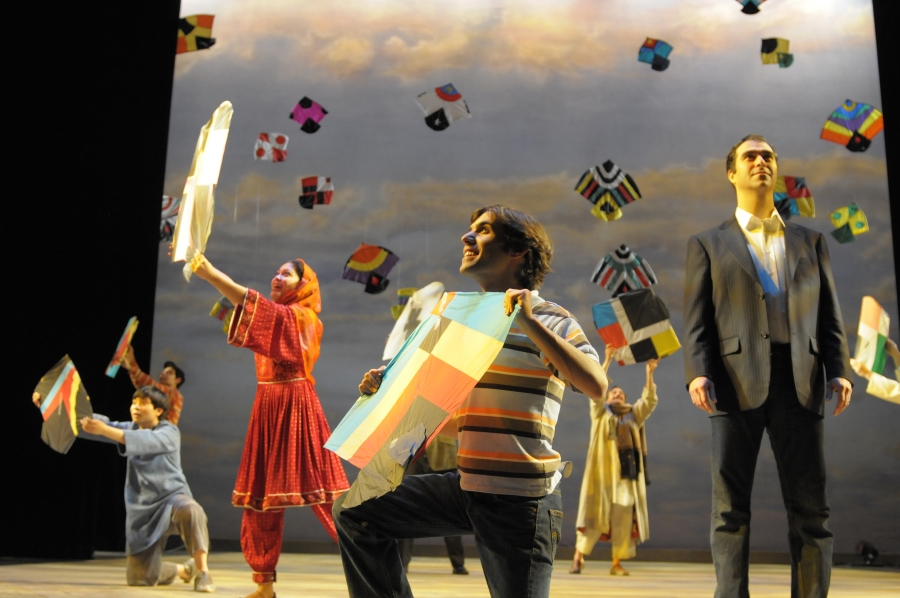PHOENIX and TUCSON, ARIZ.: Tourists flock to Arizona for the year-round sunshine, numerous resorts, sprawling golf courses, and, of course, the Grand Canyon. The Valley of the Sun, as the Phoenix metropolitan area is known, is home to tumbleweeds and cacti, and it’s also one of the home bases of Arizona Theatre Company (ATC), a LORT theatre with two resident houses in the Southwestern state.
We caught up with artistic director David Ira Goldstein via email to learn more about producing theatre for audiences in Tucson and 108 miles north in the capital city of Phoenix.
AMERICAN THEATRE: Who founded Arizona Theatre Company, when, and why?
DAVID IRA GOLDSTEIN: We just announced our 50th anniversary season. Arizona Theatre Company (ATC) was founded in Tucson in 1967, which was part of an era in the mid-’60s when many of our leading institutional theatres were founded. Sandy Rosenthal was the first artistic director in 1967. He was invited by a number of community leaders to pursue this dream of a professional theatre in Southern Arizona. It started as the Arizona Civic Theatre, and ATC achieved professional status in 1972 when it began hiring Actors’ Equity performers on a modified League of Resident Theaters (LORT) contract. The Arizona Civic Theatre began presenting a portion of its season in Phoenix in 1978, and a year later, when Mark Lamos was the artistic director, the name was changed to the Arizona Theatre Company.
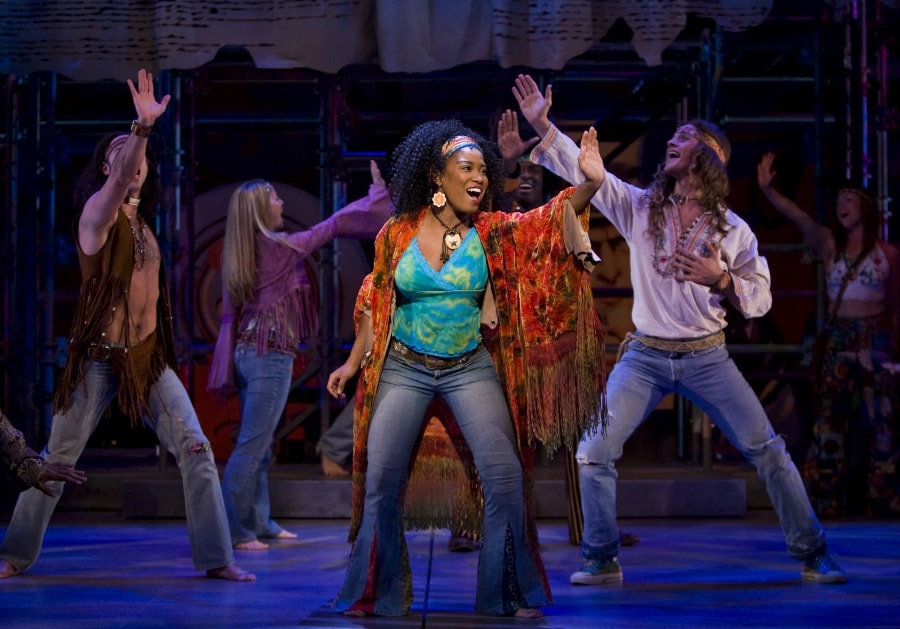
Tell us about yourself and your connection to the theatre.
I grew up in Minneapolis in the ’50s and ’60s during the era when it was establishing itself as a real arts mecca in the U.S. The Guthrie Theater began in 1963, and the Children’s Theatre Company soon followed. In fact, the first play I ever saw was Hamlet at the Guthrie in 1963. It was their very first production, directed by Tyrone Guthrie and starring George Grizzard and Jessica Tandy. I only saw the second act, though. My family—none of whom had any connection to the arts—used to picnic across the street in Loring Park. I saw this strange building go up and decided to sneak in at a Saturday matinee and see what all the fuss was about. Well, it was the second act of Hamlet, and I was smitten. Several legendary actors in that company, like Ken Ruta and Clayton Corzatte, would become friends and colleagues much later. I feel so lucky that I was in the Twin Cities at that fecund time and eventually worked at most of the major theatres there from the Children’s Theatre to Mixed Blood Theatre, Illusion Theater, Theatre in the Round Players, the late lamented Actors Theatre of St. Paul, Dudley Riggs. You name it.
I moved to Seattle in the mid-’80s to become associate artistic director at ACT during Greg Falls’s last years, and while Jeff Steitzer was the artistic director. During that time, I was a guest director at ATC three times and was named artistic director in 1992. This coming 50th anniversary season will be my 25th at ATC.
What sets your theatre apart from others in your region?
Well, we’re the only LORT theatre in the three-state Southwestern region of Arizona, New Mexico, and Nevada. But what really makes us unique is that we are the only LORT theatre fully resident in two major cities: Tucson and Phoenix. Nearly all of our work rehearses and starts in Tucson, plays there for four weeks at the Temple of Music and Art (620 seats), then goes to Phoenix for a three-week run at the Herberger Theatre (775 seats). And we are talking major cities—people are always amazed when I tell them that Phoenix is the fifth or sixth largest city in the country, battling back and forth with Philadelphia for that slot. And Tucson is more than a million people as well. So we serve an enormous region both in terms of area and population, with subscribers from every county in Arizona. We are also the only fully professional theatre in the state, with full union contracts with union actors, directors, and designers on all productions.
I think the other thing that sets us apart is our ability to really think nationally when we hire artists, utilizing a mix of local talent and national talent backstage, onstage, and in the shops. The theatre scene and cultural activity in Arizona have blossomed enormously over my 25 years here. But I still despair that there aren’t more opportunities in this region for artists—and particularly theatre artists—to get well-paying work at more places. That is very important to us at ATC: If we put you on our stage or in our shops, we work very hard to assure that you are compensated. Maybe not at a level to which we aspire, but that you will have the opportunity to be paid for your hard work.
Who is your audience?
If we look at the Theatre Communications Group statistics, we are pretty much right in the demographic ballpark of other regional theatres our size. It’s a big audience, so there is diversity in terms of age, race, means, and other demographics. But it is still a mostly older, mostly white audience. Interestingly, even though we do the same plays in both Tucson and Phoenix, our average audience is quite a bit younger and more affluent in Phoenix. There are a lot of folks in this region on fixed incomes, in Tucson especially, so we really work hard to make sure that there are affordable options for everyone. Yes, two seats on the aisle on Saturday night might cost more, but there are always tickets made available at a much lower cost, or free. We give away more than 2,000 complimentary tickets to each production to all sorts of groups, individuals, students, and really anyone who wants to share in what we do.
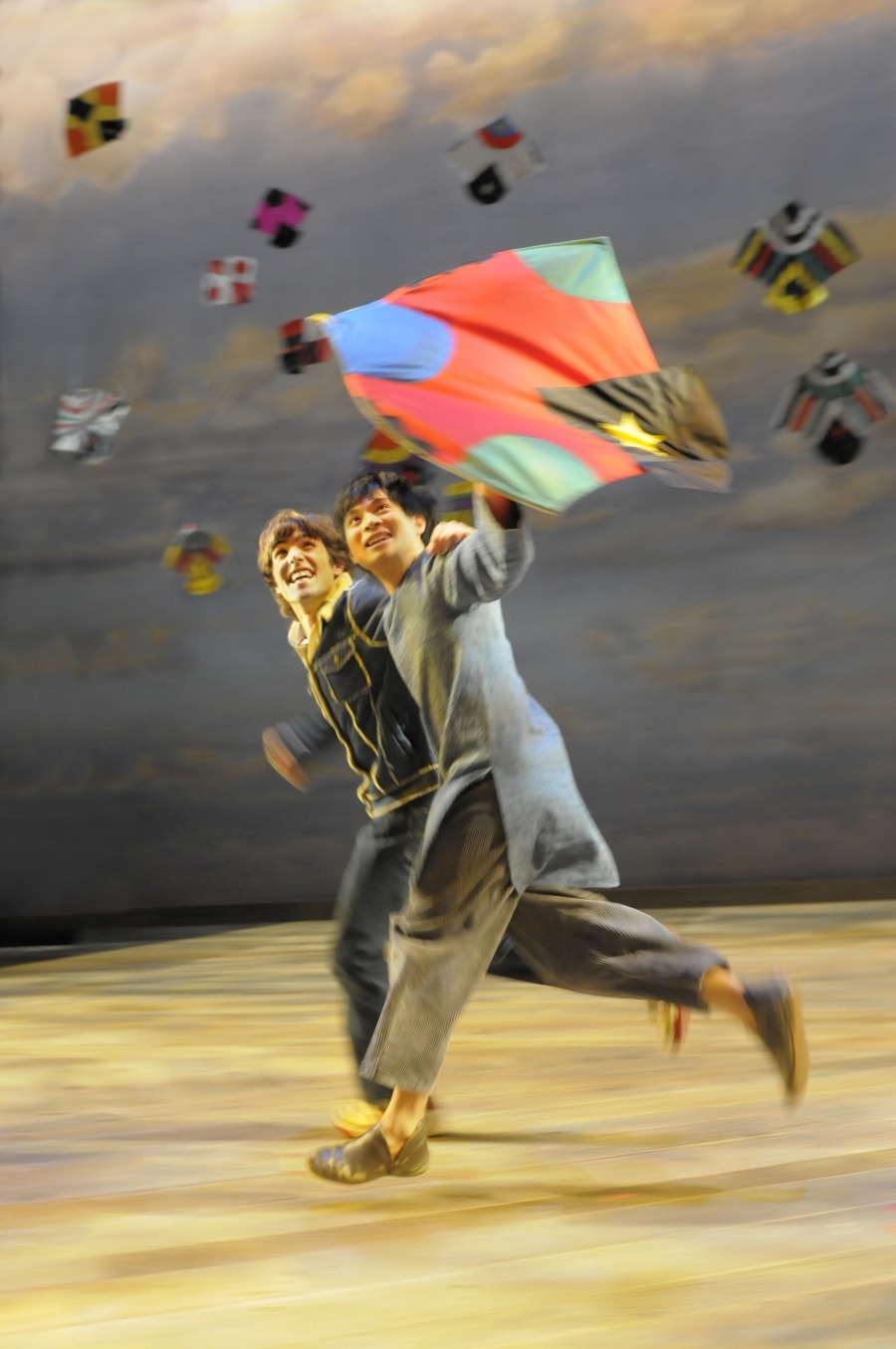
Tell us about your favorite theatre institution other than your own, and why you admire it.
There are so many to choose from! This country is so blessed with such a wide variety of wonderful theatres. For more than 25 years, I used to do “on-site reports” for the National Endowment for the Arts back when they did onsite peer reviews. So I have been to so many of our theatres, large and small, around the country. But if I had to pick one that has inspired me most consistently over the years it would be Berkeley Repertory Theatre. I first started attending back in 1984 when Sharon Ott took over as artistic director, and have tried to see as much of their work as possible ever since under Tony Taccone. They take huge risks. They tackle the widest variety of work. They have a passionately engaged audience. They connect to their community while serving as a national incubator of new work, and they are loyal to longtime artists while seeking out the newest thrilling voices. I vividly remember going to see a production they did about a dozen years ago of Ionesco’s The Rhinoceros at a Saturday matinee. The two ladies next to me spent the intermission discussing in detail how the play worked differently in the original French and in this translation. The next time I spoke to Tony Taccone, I said, “Tony, don’t ever leave, because you will never find an audience like this anywhere else!”
How do you pick the plays you put on your stage?
It’s an ongoing process involving lots of input and planning. You are always trying to think about long-term, mid-term, and short-term goals and processes. New plays we commission may be in the pipeline for several years. There are classic plays or writers that we know we want to tackle some time when the appropriate artists become available, and there are the last minute things that come up and you want to have the flexibility to program while they are hot. You think about diversity of theme, tone, style, voice, and personnel, and balancing new voices and long-time audience favorites. As a large institutional theatre that seeks to be a meeting ground for the widest possible kinds of communities, we produce new plays, classics, musicals, dramas, and comedies. Our brief is wide, so we are constantly thinking about seasons that are multi-pronged.
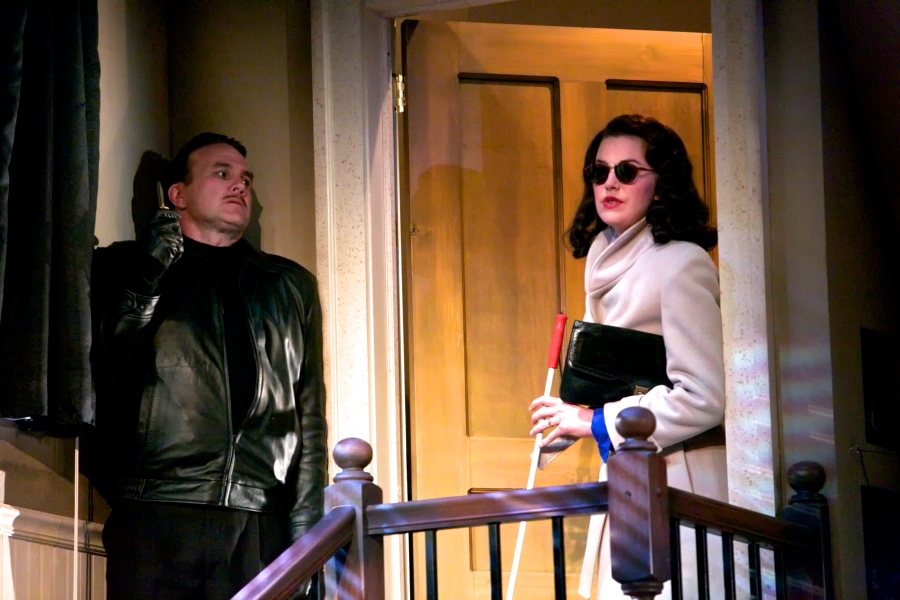
What’s your annual budget, and how many artists do you employ each season?
We have fluctuated between about $6.5 and $8 million over the last decade. The great recession hit all of us hard in Arizona in every sector in 2008-09. These last few years have been the hardest I have faced in terms of shoring up our finances each year. We generally employ about 150-200 artists each season, and 35-70 of those are actors.
What show are you working on now? Anything else in your season that you’re especially looking forward to?
Currently I am working with Jeffrey Hatcher on a new play that we commissioned, Holmes and Watson. Jeffrey and I have worked together many times over my tenure, notably on the premieres of Jekyll and Hyde, Sherlock Holmes and the Adventure of the Suicide Club, and Ten Chimneys. We truly enjoy working together, and as this coming season will likely be my last at ATC, we wanted to have one more go around. He had a wonderful idea for a really devious, delicious mystery, so I said, “Let’s go!” As far as work on our stage currently, we just opened a terrific production of Steinbeck’s Of Mice and Men last Saturday in Phoenix. It is a coproduction with Milwaukee Repertory Theatre and was directed by Mark Clements, an ongoing partner. And we are going into tech tomorrow in Tucson on Scott Carter’s witty and wise The Gospel According to Thomas Jefferson, Charles Dickens and Count Leo Tolstoy: Discord. Matt August is directing in his desert Southwest debut along with a whole group of wildly imaginative designers and actors new to us at ATC.
Strangest or funniest thing you’ve ever seen (or put) on your stage?
I’d have to go with The First Hundred Years, written by and starring the great Geoff Hoyle and directed by Tony Taccone. It was a coproduction with the aforementioned Berkeley Rep, and it still haunts my dreams. Hilarious and harrowing by turns—and almost wordless—the grand finale was a full-size wrecking ball smashing through the brick wall at the back of the stage with a gleeful Geoff astride. I am sure there are still people out there who will never forgive me for having to reconstruct a brick wall, piece by piece by piece, before every performance…
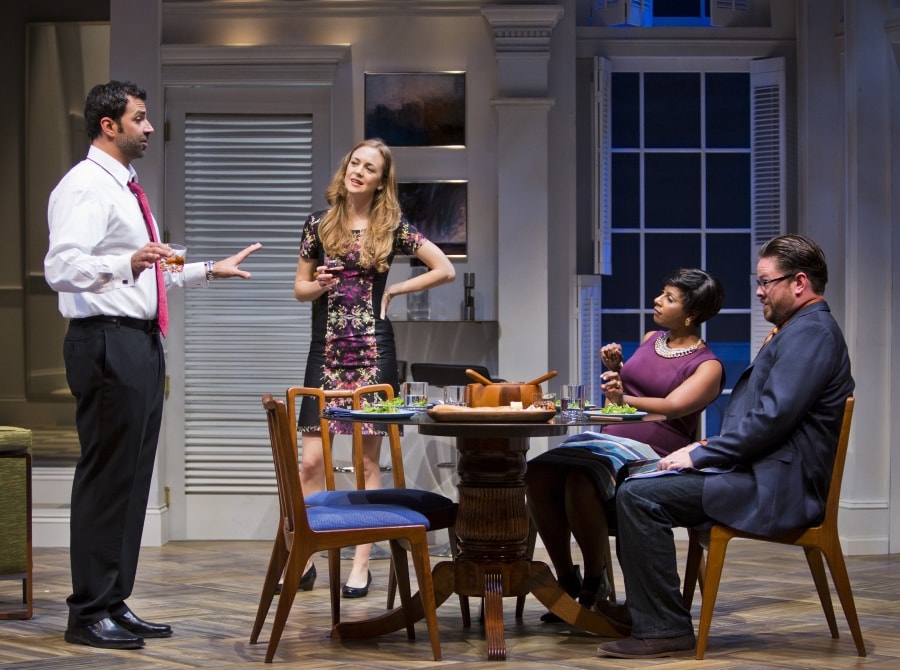
What are you doing when you’re not doing theatre?
My wife and I have six rescue animals—three dogs and three cats—that we are hopelessly devoted to as our family. Several are elderly and need a lot of care, so we spend a lot of time with them. We also have a small second home up on the Oregon Coast in a small town named Yachats. We don’t get much time away up there, but it’s heavenly when we can be there together to hike and watch the whales and generally chill out. I march in the Umbrella Brigade every Fourth of July in the La De Da parade along the coast. And given the summer heat in Arizona, I am using “chill out” in a very literal sense!
What does theatre—not just your theatre, but the American or world theatre—look like in, say, 20 years?
Well, theatre sure ain’t dying! I think we are experiencing a golden age of playwriting, so I look forward to a future filled with new stories told in new ways by passionate young artists. I am actually as optimistic about what may be coming as I have been in ages. I think it will be a vastly changed and challenging era for mid-size theatre institutions, but I think we are in the early stages of a renaissance of new forms, new ways of storytelling that can be realized in ways that put creation within a wider reach of voices and means.

